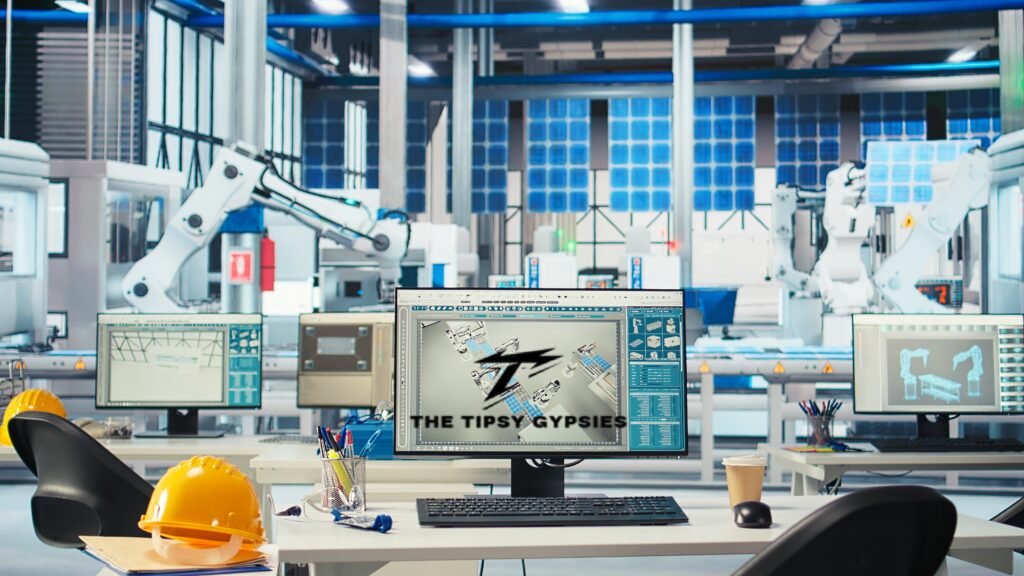Repmold is a modern manufacturing approach that focuses on creating accurate molds and replicas of parts with speed, consistency, and flexibility. Unlike traditional mold-making, which is slow and restricted by material limitations, repmold combines advanced digital design, high-performance materials, and automated fabrication to produce reliable molds in a fraction of the time.
Its purpose is simple yet powerful, to give industries the ability to replicate components quickly, reduce waste, and scale production efficiently. Today, repmold is transforming sectors such as automotive, aerospace, consumer electronics, healthcare, and construction.
The Origins and Definition of Repmold
The term repmold comes from two words, replica and mold, directly describing its purpose. For centuries, molds have played a central role in human craftsmanship, from clay pottery to cast iron tools. Early molds required immense manual labor, often limiting the number of parts that could be produced.
During the Industrial Revolution, steel and iron molds became standard, enabling mass production of machine parts and consumer goods. However, these molds were expensive, rigid, and time-consuming to manufacture. By the mid-20th century, injection molding improved speed and reproducibility, but engineers still faced long lead times when crafting the first mold.
Repmold emerged in the late 20th and early 21st centuries as a direct response to these limits. The rise of CAD design, CNC machining, and additive manufacturing gave manufacturers the ability to design, test, and fabricate molds faster than ever before. Repmold signifies this leap forward, enabling precise duplication of designs with accuracy, scalability, and cost-efficiency.
The Technical Foundations of Repmold
At its core, repmold is built on the integration of digital tools and advanced materials.
The process begins with computer-aided design (CAD), where digital models of a part are created. Simulation tools test these models virtually, reducing costly errors before physical molds are produced.
When designs are finalized, molds are created through CNC machining, 3D printing, or hybrid methods. CNC machining guarantees tight tolerances, while additive manufacturing enables intricate geometries that are impossible with traditional methods.
Material science is equally vital. High-performance polymers, composites, and alloys are engineered to withstand high pressures, repeated use, and extreme conditions. This ensures that repmolded parts are accurate, durable, and versatile.
The defining principle of repmold is speed combined with precision. Processes that once took months now take only days, empowering industries to move rapidly from prototype to final product.
Repmold Compared with Traditional Mold-Making
Traditional mold-making relied on intensive craftsmanship. Skilled workers would spend weeks shaping molds from stone, clay, wood, or metal. This approach was slow, resource-heavy, and lacked flexibility.
Repmold completely reshapes this workflow. Instead of manual carving, molds are digitally designed and fabricated automatically. Traditional molds were limited to metals and ceramics, while repmold allows the use of polymers, composites, and advanced alloys.
In terms of cost and efficiency, traditional molds demanded high upfront investment and long production cycles. Repmold drastically reduces both, making it easier for companies to prototype quickly and launch products faster.
This change is more than technological. Traditional molds celebrated craftsmanship but sacrificed scalability. Repmold celebrates scalability while preserving accuracy and quality.
Applications of Repmold Across Industries
Automotive
The automotive industry benefits from repmold in prototyping and production. Engineers can quickly create parts such as dashboards, panels, or engine components, ensuring faster design cycles and cost savings.
Aerospace
In aerospace, repmold is invaluable because precision and durability are critical. Lightweight yet strong parts can be replicated with exact tolerances, ensuring performance under extreme temperatures and pressures.
Consumer Electronics
Consumer electronics evolve rapidly. Repmold enables manufacturers to produce device casings, housings, and prototypes of smartphones or wearables, cutting development time significantly.
Medical and Healthcare
Repmold supports healthcare by creating custom implants, prosthetics, surgical instruments, and device casings. Custom-made molds guarantee that medical solutions fit each patient precisely and provide the accuracy required for safe treatments.
Construction and Infrastructure
In the construction sector, repmold makes it possible to manufacture modular parts with uniform quality and reliability. This reduces material waste and ensures reliable, high-quality finishes across large-scale projects.
Benefits of Repmold Technology
Repmold offers a range of benefits that combine practicality with strategic advantages.
It brings speed, cutting mold-making cycles from months to days. It delivers flexibility, supporting different materials and complex geometries. I drives cost reduction, with automation reducing errors and lowering waste.
Another key advantage is consistency. Every replica produced is almost identical to the master, ensuring compliance with strict industry standards.
Repmold also contributes to sustainability. By reducing resource waste and minimizing scrap, it aligns with environmental initiatives and corporate sustainability goals.
In simple terms, repmold is about efficiency, reliability, and sustainability at scale.
Challenges and Limitations of Repmold
Despite its many advantages, repmold faces certain challenges. Some materials used in repmold may not last as long as traditionally forged molds, particularly in high-stress environments.
The initial setup costs for CAD software, CNC machines, and 3D printers can be high. Companies must also invest in training, since employees require digital and technical skills to operate repmold systems effectively.
There are also intellectual property risks. Because repmold allows faster replication, it can make design theft easier if protections are not in place.
These challenges are real, but they are manageable. With proper planning and skilled oversight, repmold provides far greater benefits than drawbacks.
The Economic and Social Impact of Repmold
Repmold is reshaping not only factories but entire economies. By lowering barriers to entry, it enables small and medium-sized businesses to compete with larger corporations. This approach helps smaller companies compete with larger ones while promoting fresh innovation across multiple industries.
On a social level, repmold creates new jobs in design, digital manufacturing, and quality control. It also strengthens global competitiveness by allowing emerging economies to adopt modern production methods without requiring massive infrastructure.
Most importantly, repmold aligns with global sustainability initiatives by lowering material waste and energy consumption. This positions it as both an economic enabler and an environmental solution.
Cultural and Industry Perspectives
Repmold is often seen as a symbol of adaptability and innovation. For traditionalists, it represents a shift away from handcrafted molds. For forward-looking businesses, it embodies precision, scalability, and sustainability.
Industry leaders emphasize that repmold is not just a process but a strategic tool. It allows engineers and designers to focus on creativity, leaving the repetitive work of replication to reliable technologies.
This perspective highlights that repmold enhances rather than replaces human creativity. It ensures that innovation remains at the heart of production while reducing the burden of manual labor.
The Future of Repmold
The future of repmold lies in its integration with emerging technologies. Artificial intelligence and machine learning will allow smarter designs, predictive maintenance, and automation at every stage.
Repmold is expected to expand into biomanufacturing, where molds replicate biological structures for regenerative medicine or advanced implants. At the same time, eco-friendly biomaterials will further reduce environmental impact.
Another exciting direction is customization. Instead of only mass production, repmold will allow the on-demand creation of personalized items, from patient-specific implants to tailored consumer products.
The trajectory is clear. Repmold is not simply a tool, it is a framework shaping the next industrial era.
Conclusion
Repmold goes beyond being just a technique, it represents a major transformation in the way products are designed and manufactured. By merging digital design, automation, and advanced materials, it gives industries the ability to work faster, with greater flexibility, and with reduced environmental impact.
From its historical roots in manual mold-making to its expanding role in industries like aerospace, healthcare, and consumer electronics, repmold shows the balance of precision and scalability.
Its challenges are real but manageable. With training, investment, and protective strategies, industries can overcome these limitations and thrive.
As global markets demand innovation, speed, and sustainability, repmold emerges as the bridge between tradition and modern manufacturing. It is not only shaping parts but also shaping the future of industry itself.
Frequently Asked Questions ( FAQs )
What is Repmold?
Repmold is a modern manufacturing method used to create highly precise molds and replicas quickly and consistently. It combines digital design, CNC machining, 3D printing, and advanced materials to reduce errors, cut production time, and deliver accurate components for industries like automotive, aerospace, healthcare, and consumer electronics.
How does Repmold differ from traditional mold-making?
Repmold is faster, more flexible, and less resource-intensive than traditional mold-making. Traditional molds often take weeks and rely on manual craftsmanship, while repmold uses CAD, automation, and innovative materials to produce molds in days. This approach reduces cost, increases consistency, and supports scalable production across multiple industries.
Which industries benefit most from Repmold?
Industries such as automotive, aerospace, consumer electronics, healthcare, and construction gain the most from repmold. It enables rapid prototyping of car parts, precision aerospace components, device casings, custom medical implants, and modular building materials, helping these sectors innovate quickly while maintaining high accuracy and reducing waste.
What are the main benefits of Repmold technology?
The main benefits of repmold include speed, flexibility, cost savings, consistency, and sustainability. It shortens production cycles, supports multiple materials, lowers prototyping expenses, ensures precise duplication of parts, and reduces environmental impact by minimizing waste and energy use. These advantages make it a key tool for modern manufacturing.
What is the future of Repmold?
The future of repmold lies in AI integration, smart manufacturing, biomaterials, and customization. Artificial intelligence will optimize design and maintenance, eco-friendly materials will cut environmental impact, and on-demand customization will enable personalized products. Repmold is expected to play a central role in shaping the next industrial era.






